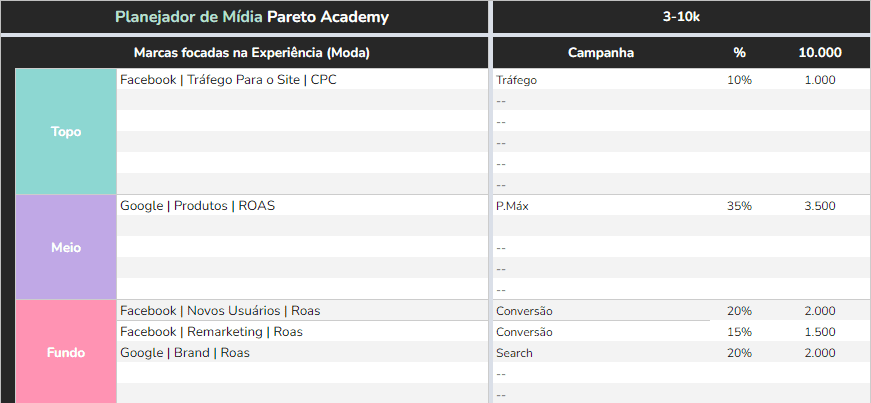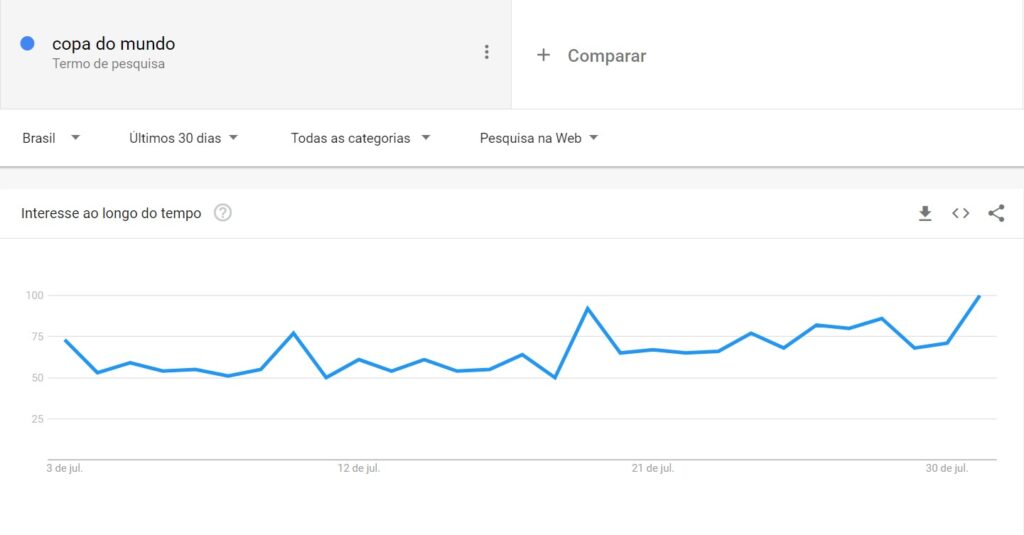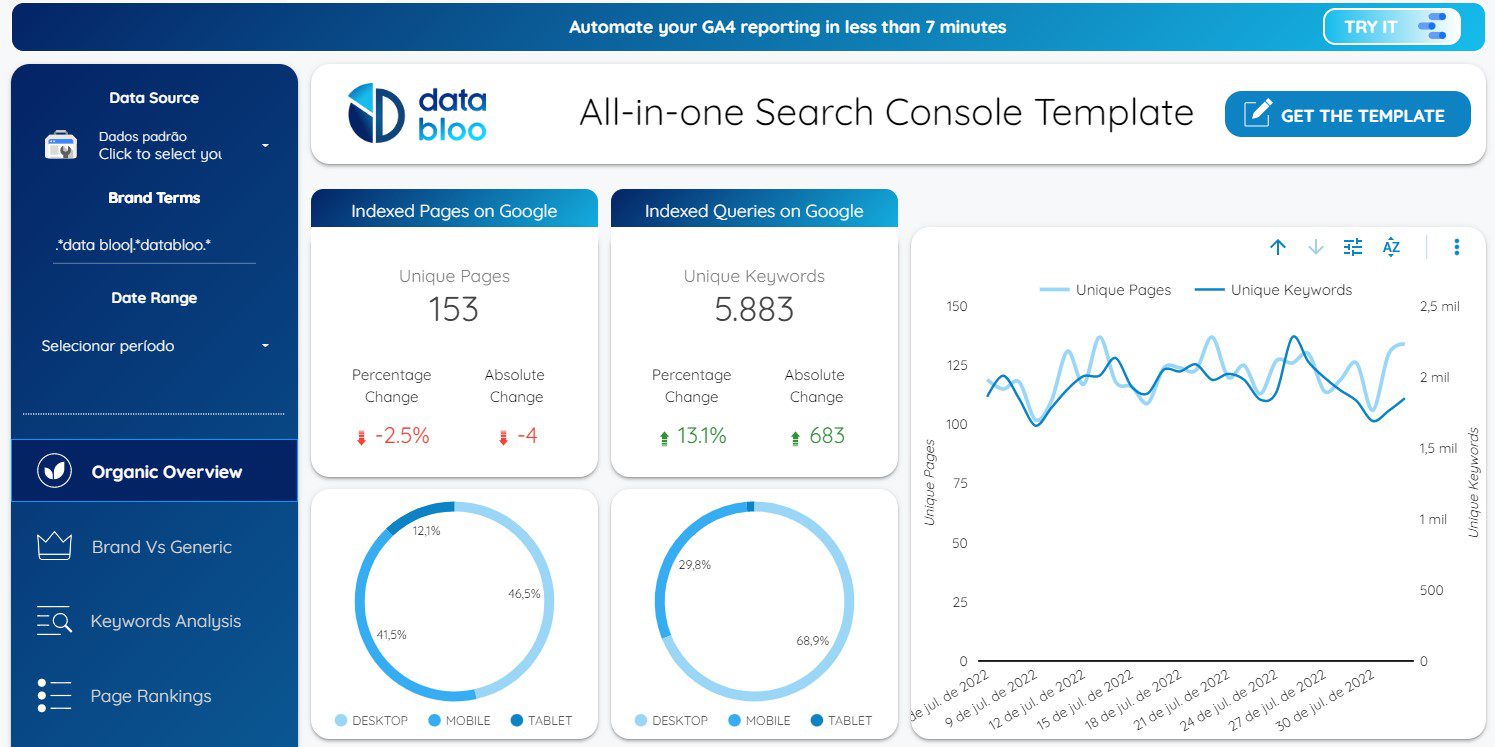Brazil is the second country in which people use the internet the most, with around 10 hours of consumption per day.
Faced with this fact, many companies are investing more and more in digital, which means increased competition and competition for people's attention.
The best way to stand out is to use strategies and tools to monitor, plan, organize, distribute and analyze all media content on digital channels.
And this is only possible with a good media plan! In this article you'll find the key information you need to put together a media plan that works, with expert tips.
What is a Media Plan?
The media plan is a tool for documenting and developing the strategies that will be used in the digital environment.
Planning this requires an understanding of the company's business, its objectives, the main KPIs to be monitored, the budget that will be invested and the channels that will be used to run the campaigns.
In general, good planning helps to organize the strategy, boost results and monitor the actions taken.
What is the importance of the Media Plan?
The media plan is fundamental to implementing actions with the right communication for the right audience at the right time, thus avoiding wasting money on audiences that have no interest in the business.
Check out more benefits that the media plan offers for your marketing strategy!
Organizing the Marketing Strategy
A good media plan is essential for organizing your strategy. It will document the KPIs to be monitored, the channels that will be used and how all this will be done.
It's also very important that this document is easy to access and that all the points are clear so that the entire team involved can work with metrics to optimize campaigns.
In the case of an e-commerce business, for example, it's important to know which ad channels will be used (Google Ads, Meta Ads, Pinterest Ads), which will be the main KPI to monitor (Conversion Value, ROAS, Purchases, Margin).
Boosting Business Results
The media plan is also responsible for boosting results, allowing you to use your marketing budget more intelligently to generate more conversions and engagement at the lowest possible cost.
This makes it much easier for you to be clear about your objectives and the structure you need to set up, which boosts your day-to-day results.
Facilitating the Monitoring of Actions
How often will the results be monitored? This is an important question to answer in media planning.
During this monitoring, an evaluation is made to see if the results are being achieved. If the objectives are not as planned, it will be necessary to think about improvements to reverse these poor results.
How to Build a Paid Media Plan?
Now that you know what a paid media plan is and how important it is, it's time to start structuring yours!
To do this, it's important that your entire team is aligned, as everyone will play an important role in implementing the strategies drawn up in the plan.
Draw up a Briefing
At this stage, you need to go deep into brand positioning. Here, you will record what your company's characteristics are, what its history is and what the brand's visual identity is.
These records will be your guide to positioning yourself in the digital environment. It's important that you know how you want to be seen and remembered by people.
Remember that behind the KPIs there are real people who are contacting your ads and evaluating your company.
Do market analysis
Do you know who your competitors are? What channels do they use? Where is their audience? It's time to do this research, map out your competitors and study them.
One tip for this stage is to use tools such as the Meta Ads library to research your competitors' ads and understand how they position themselves.
It's also important to understand which channels your audience is most present on. The internet is a very broad world and people behave differently within it.
There are companies where the public is more present on Instagram, others where the public is more active on the Google Search Networketc. That's why you need to define which channels will allow you to reach your audience more precisely.
Set Objectives
A media plan can have various objectives, such as brand awareness, website traffic, sales, registrations, etc.
At this stage, it is essential to define what your main objective will be, as this will define what goals and strategies will be used on the platforms for creating paid media campaigns.
Define the KPIs
After defining the objective of the campaign, you will define the KPI responsible for measuring whether the campaigns are having good results. Let's take an example:
A fashion store aims to sell more products on its e-commerce site. To do this, it will set up a campaign structure with the aim of increasing the volume of sales and the main KPI to be monitored will be purchases on the site.
Define Channels and Budget
Once you've decided on the main KPI that will be used as a performance parameter, it's time to define the channels on which the ads will run.
In the world of paid media, there are several options to choose from, such as Google Ads, Facebook AdsTwitter Ads, Linkedin Ads, among others. You need to do some research and see which of these channels are most used by your potential client.
Generally speaking, the channels most used to start running ads are Google Ads and Meta Ads. These channels have a high volume of users, which is very attractive to advertisers.
After choosing the channels, you need to define the budgets that will be invested in each one. A good practice is to set a monthly budget for each channel and monitor day-to-day performance to make any adjustments that may be necessary.
If you have any questions or want to make your routine easier by automating your budget management, see also our article on GBudget Management for Google Ads and Facebook Ads with AI.
Plan your campaigns
What types of campaigns will be run on each channel? At this stage you will create campaigns based on the objectives you want to achieve.
The paid media platforms themselves offer the possibility of creating campaigns of many different types, so you need to choose the ones that make the most sense for your business strategy.
To delve deeper into this topic, we recommend reading two articles:
- Facebook Ads Campaign: Existing Types, Most Used Terms and Optimization
- Types of Google Ads Campaigns
Build your schedule
Building a schedule for monitoring results is a best practice for your media planning, because after creating the campaigns you need to keep track of the results that are being generated.
The platforms allow you to track these results practically instantaneously, which is great for analyzing performance and deciding whether optimizations are necessary.
In the schedule you can define on which days of the week you will do this monitoring and on which days you will carry out the necessary optimizations.
Paid Media Plan Monitoring Tools
There are some very useful tools for monitoring campaign performance, check them out below!
Google Analytics
One of the most widely used data tools in the world is Google Analytics. This tool is connected to your website and provides various reports for different analyses.
Through it you can find out the number of sessions, new users and transactions carried out, for example. You can also understand user behavior on each page of your site.
If you already use GA and have questions about tracking sales, see also our article on the Discrepancy between Facebook Sales and Google Analytics.
Google Trends
Google Trends is a free tool offered by Google, which allows you to check the trend of searches for a given term over a given period of time. As an example, we selected the term World Cup over the last 30 days.
SemRush
With SemRush you can do SEO, content marketing, competitor research and many other things.
This tool has a large database with access to more than 21 billion keywords, allowing you to discover the best keywords to use in your campaigns.
 Data Studio
Data Studio
Data Studio is also a free tool from Google, with which you can transform your data into fully customized graphs and tables that are easy to read and can be shared with your team.
Some of Data Studio's features are: viewing customizable graphs and tables, connecting to various data sources and sharing key insights with the whole team.
Media Plan Template
Now it's time to get down to work. We've created a fictitious media plan to serve as a template so that you too can make your own.
In the example below, we used the media planner from the Pareto Communityfor a fashion e-commerce with a focus on experience.

Note that in this model, we define the total budget, the budget for each campaign, the channels (Facebook and Google), the KPIs to be monitored (ROAS and CPC) and the type of each campaign.
Remember that during the creation of the campaign you can be even more detailed in the segmentation by choosing the target audience, the location and the age of the people, for example.
Note that we strategically allocated money to each stage of the funnel. The traffic campaign was chosen to bring new users to the site and feed the conversion-focused remarketing campaign.
The Performance Max campaign was chosen because it covers all of Google's inventory, from the shopping mall to YouTube.
We also chose a conversion campaign on Facebook for new users and the brand campaign with the aim of protecting our brand name from the competition.
Find out how Pareto can help you build a good media plan
A Pareto is an Artificial Intelligence company that automates various areas, including Marketing and Sales. Over the years, it has developed automations that are used by more than 15,000 companies in 84 countries.
With Pareto you have all the support you need to optimize your paid media campaigns. Tess, our A.I., is able to rationalize and carry out actions that have the best chance of achieving a specific objective.
See the video below for a simulation of how Tess can help you manage your digital marketing strategies.
In addition to technology, Pareto has a team of specialists to boost your business with strategy, implementation, optimization and monitoring of your campaigns.
Count on Pareto to be your right-hand man in paid media. Talk to our experts now!





 Data Studio
Data Studio

